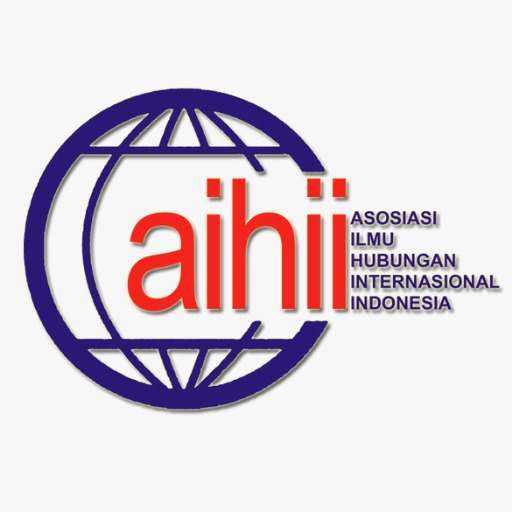Strategi Pemerintah Republik Indonesia dalam Penanganan Masalah Pelintas Batas Indonesia-Timor Leste
Downloads
ABSTRACT
The urgency to set up the Border Between Indonesia and Timor-Leste and the border crossers is based on much more complex historical reasons than the arrangement of Indonesia's borders with other countries. Border governance policies between Indonesia and Timor-Leste are characterized by: border governance policies indicate a desire to adopt an integrated approach, governance practices tend to be fragmented where two very dominant approaches are the security approach and the socio-economic welfare approach. A border governance policy that ignores cultural identity variables leads to a reverse response, namely the use of cultural identity to challenge the country's dominant conception and policy in border governance. The phenomenon of "rat road" and other cross-border interaction networks called illegal by the state can be read as a form of local community resistance to the claim of state sovereignty over the border. In an integrated border governance policy, a cultural approach should be one of the main components that characterize other approaches. Jailly puts the four dimensions of the policy parallel, the cultural approach in border governance policy to the principles that fuel security policy, local politics and economic policy in border governance. The practical consequence of this study is the policy that border governance must move beyond the dominance of the economic security approach to an integrated approach. This study proposes the concept of trans-border social and cultural space as an important element in integrated border governance.
Key Words: Border governance, Indonesia – Timor-Leste, Cultural crosser borders.
Buku
Bellwood, Peter. 1985. Prehistory of the Indo-Malayan Archipelago. (Canberra: ANU Press).
Gualini, Enrico., 2003. "Cross Border Governance: Inventing Regions in a Trans-National Multi-Level Polity.
Held, David., et.al, 1999, Global Transformations: Politics, Economics and Culture, (Stamford; Stamford University Press).
Jailly, Emanuel Brunet., 2007. Theorizing Borders: an Interdisciplinary Perspective.
Madu, Ludiro., dkk. 2010. Mengelola Perbatasan Indonesia di Dunia Tanpa Batas. (Yogyakarta; Graha Ilmu).
Martinez, Oscar. 1994. ‘The Dynamics of Border Integration: New Approaches to Border Analysis'. In Global Boundaries, ed., c. Schofield, 145. London: Routledge.
Tylor, E. B. 1924. PrimitiveCulture. (New York: Brentano's.).
Dokumen
Direktorat Jenderal Penanganan wilayah perbatasan Maritim RI - RDTL dalam rangka menjaga Keutuhan NKRI (2007:1).
Ketetapan MPR No. V/MPR/1999 tentang pencabutan Ketetapan MPR No. IV/1978 yang berisikan tentang Integrasi Timor Timur.
Jurnal
Muta'ali., 2014. Pusat Kajian Permukiman, Transmigrasi dan Perbatasan (Puspertrantas), Fakultas Geografi UGM, h. 174.
Pannison, Marison. "Migration and Trade: prospects for bilateralism in the face of skill selective mobility law”, Melbourne Journal of International Law, Vol. 12, 2011.
Puspitasari, Yeni. 2013. "Upaya Indonesia Dalam Menangani Masalah Keamanan Perbatasan Dengan Timor Leste Pada Periode 2002-2012”. Skripsi. Jakarta: Program Studi Hubungan Internasional Fakultas Ilmu Sosial dan Ilmu Politik UIN Syarif Hidayatullah.
Internet
Bere, Sigiranus Marutho., 2014 "Titik Perbatasan RI-Timor Leste Rawan Konflik”. http://regional.kompas.com/read/2014/09/17/08143221/6.Titik.di.Perbatasan.RI-Timor.Leste.Rawan.Konflik (diakses 24 Mei 2018).
Bere, Sigiranus Marutho., 2016. "6 Titik di Perbatasan RI dan Timor Leste Berpotensi Konflik”. http://nasional.kompas.com/read/2016/09/24/17592861/6.titik.di.perbatasan.ri.dan.timor.leste.berpotensi.picu.konflik. (Diakses 24 Mei 2018).
Ibrahim, Gibran Maulana., 2016. "Masalah Batas Darat dengan Timor Leste Belum Selesai, RI Tawarkan Solusi” https://news.detik.com/berita/d-3343373/masalah-batas-darat-dengan-timor-leste-belum-selesai-ri-tawarkan-solusi. (diakses 24 Mei 2018).
Kantor imigrasi Atambua. "Lagi - lagi !!! Kantor Imigrasi Atambua tangkap WN Timor Leste”, Di akses dari http://www.kanimatambua.com/index.php?me=detailberita&mk=Berita&kode=37, Pada tanggal 20 Mei 2017.
Kantor imigrasi Atambua. "Kendala Imigrasi Atambua: "Sense of Security" Pemda dan Dokumen Kependudukan”,Di akses darihttp://www.imigrasi.go.id/index.php/berita/berita-utama/423-kendala-imigrasi-atambua-sense-of-security-pemda-dan-dokumen-kependudukan,Pada tanggal 20 Mei 2017.
Taum, Yoseph Yapi., 2015. "Suku Dawan Nusa Tenggara Timur”., diakses dari http://www.wacana.co/2015/08/suku-dawan-nusa-tenggara-timur.html, pada tanggal 13April 2018.
Berita
Detik news, 04-2-2014, Ray Jordan.
Herin, Frans Pati., dan Irma Tambunan. Para Pelintas Gelap itu Bebas Lewati Perbatasan. Harian Kompas, 27 Oktober 2016.
Holthouse, Kym., dan Damian Grenfell. 2008. Social and Economic development in Oecussie, Timor Leste. Laporan Oxfam Australia dan Globalism Institute, RMIT University Melbourne.
Humas Setkab Rl, Resmikan Wajah Baru PLBN Entikong, Presiden Jokowi: Nyatanya kita bisa kan? Diposkan pada: 21 Dec 2016; 72064 Views Kategori: Berita.
- Authors retain the copyright of their article without restrictions and grant the journal right of first publication with the work simultaneously licensed under a Creative Commons Attribution License that allows others to share the work with an acknowledgment of the work's authorship and initial publication in this journal
- Authors are able to enter into separate, additional contractual arrangements for the non-exclusive distribution of the journal's published version of the work, with the condition that it is not intended for commercial purposes, and cite an acknowledgment of its initial publication in this journal.
- Authors are permitted and encouraged to post their work online (e.g., in institutional repositories or on their website) prior to and during the submission process, as it can lead to productive exchanges, as well as earlier and greater citation of published work (See The Effect of Open Access). However, authors are not allowed to share their work with other journals or publishers as it may lead to conflicting publication processes.

This work is licensed under a Creative Commons Attribution-NonCommercial-ShareAlike 4.0 International License.














